
Number of accepted Harris's Hawk records for Louisiana = 11

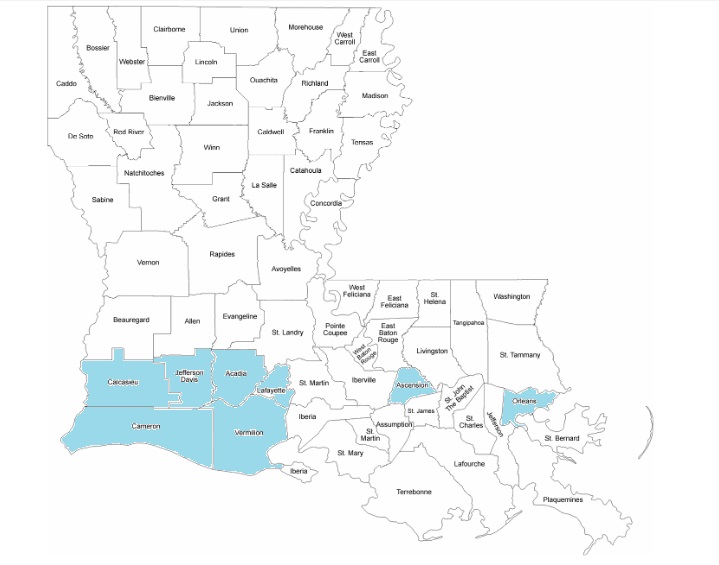
This record coincides with a major invasion as far north as the Great Plains and Southern California during fall 1994 (FN 49(1):11; 49; 65; 69; 82; 100) and winter 1994-95 (FN 49(2):119; 153; 155-159; 163; 166; 173; 178; 196-197; FN 49(3):270; 288; 309). Because of these records it is more likely that this bird was part of that flight, rather than a falconer's escape. Two previous records were not accepted based on questionable origin. These records may pertain to wild birds. Lowery (1974) included the species on the State List; re-evaluation by the LBRC resulted in the species being deleted. This record represents the first state record and restores the species to the State List.
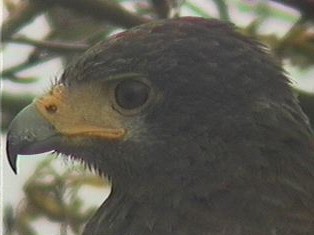
Photo and video by Paul Conover
One in adult plumage (1995-14) on 2 Jan 1995, Lafayette: 1 mi. S of Hwy. 90 on Hwy. 719, between Duson and Rayne; Steven W. Cardiff and Donna L. Dittmann; NASFN49(2):156. The observation coincided with a northward irruption during fall-winter of 1994-1995.
One in adult plumage (2006-45) from 3-18 Dec 2006, Calcasieu: S of Holmwood along
Lionel Derouen Road, and E of Holmwood near intersection of Hwy. 14 and Fruge Road; Donna L. Dittmann (ph) and Steven W. Cardiff,
James Beck
(ph),
James Reiter, and Paul E. Conover
(ph only); first reported by Gay M. Gomez; NAB61(2):280.
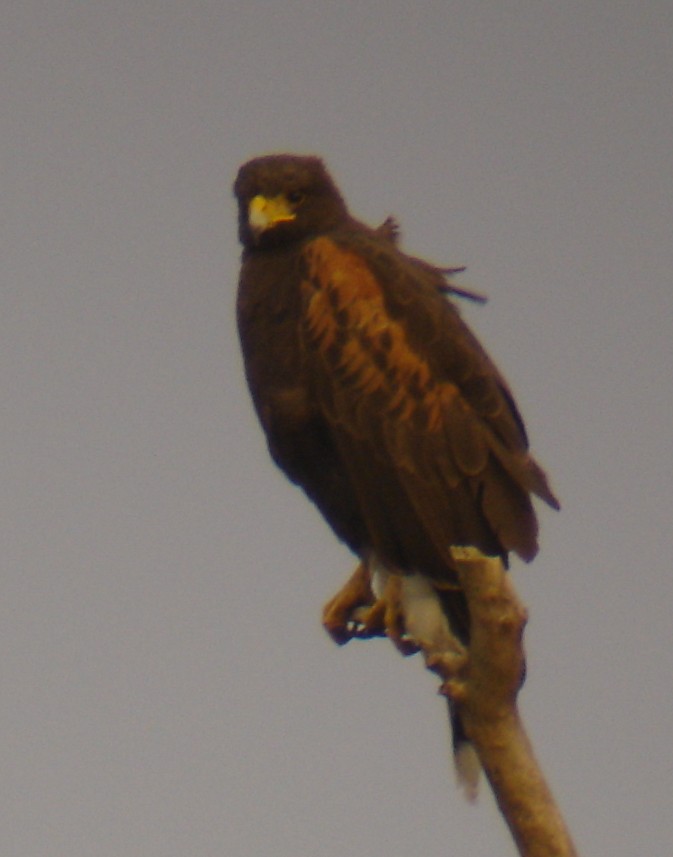
Photo and video by Paul Conover
One adult (2007-018) on 1 January 2007, Orleans: Recovery 1 at railroad tracks; Phillip A. Wallace (ph).
A majority of Members accepted as Origin-Hypothetical. Although there are several accepted wild occurrences from
SW Louisiana, it is a species commonly kept by falconers and thus the origin of this individual east of the previously
accepted records is problematic.
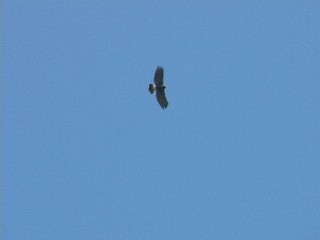
Video still by Phillip Wallace
One adult (2009-71) from 2 November 2009-6 February 2010, Acadia: vicinity of 1 mi. E of Rayne on Hwy. 90;
Dave Patton
(ph),
Tom Finnie
(ph),
Rosemary Seidler
(ph),
Devin Bosler
(ph),
Donna L. Dittmann (ph only), Paul E. Conover
(ph); found by Bill Hoffpauir fide Dave Patton.
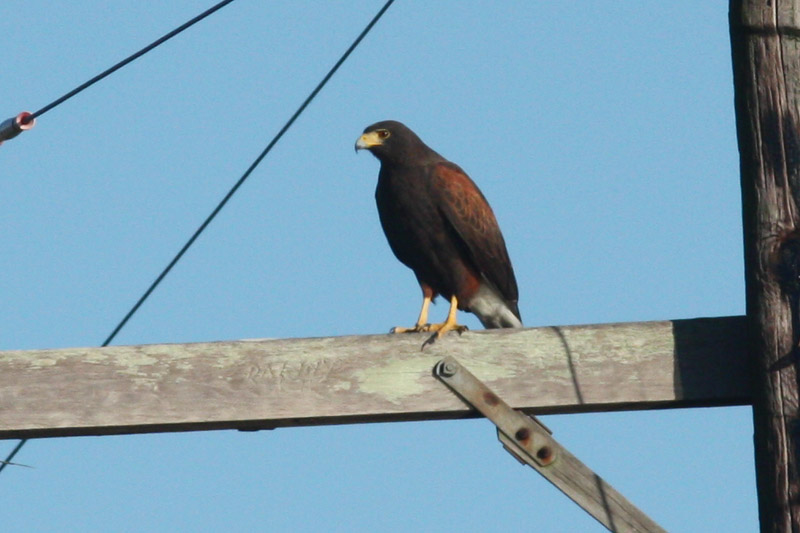
Photo by Dave Patton
One adult (2017-049) on 28 October 2017, Cameron: Hwy. 27 just S Holly Beach water tower;
Joelle Finley
and Ken Harris (ph only).
Photo by Joelle Finley
One adult (2017-065) on 28 November 2017- 28 January 2018, Jefferson Davis: Welsh Landfill, 3.3 mi. NW
Welsh;
Erik I. Johnson (ph),
J. V. Remsen (ph),
Daniel F. Lane,
Paul Conover (ph),
Robert C. Dobbs (ph),
Jim Holmes (ph),
Rosemary Seidler (ph),
Jay V. Huner (ph),
Donna L. Dittmann (ph) and Steven W. Cardiff.
This bird was reportedly found on 26 November 2017 by Ivan Fruge.
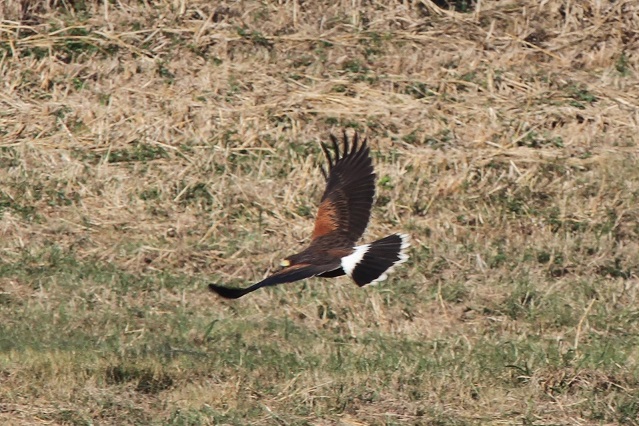
Photo by Jim Holmes
One adult (2017-072) on 18 December 2017, Cameron: Cameron Prairie NWR, N29.98151�, W93.07678�;
Phillip L. Vasseur (ph).
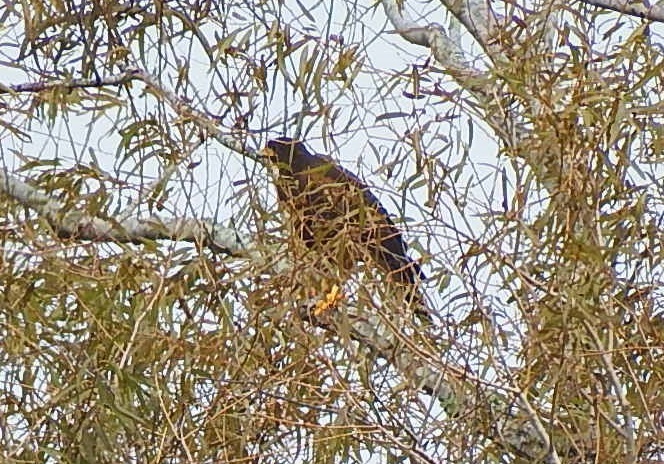
Photo by Phillip L. Vasseur
One adult (2000-098) on 26 December 2000 and presumably the same bird on 4 January 2001, Ascension:
north side of US 61 about one half mile west of intersection with Motavit Road;
Jay V. Huner, and
B. Mac Myers III (ph) and
Phillip A. Wallace (ph). Jennifer P. Coulson provided insights about captives.
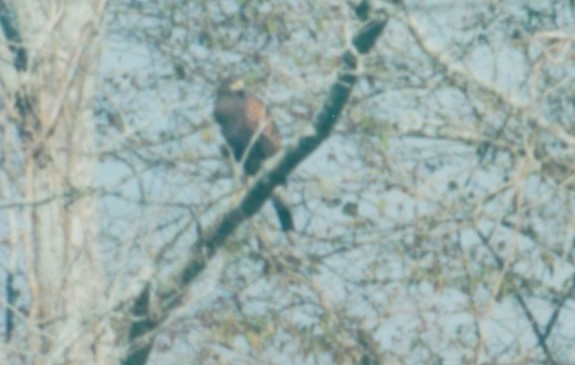
Photo by B. Mac Myers III
One adult (2018-074) on 22 October-28 November 2018, Orleans: New Orleans, Lake Forest Blvd. off
Read Blvd.;
Glenn Ousset (ph) and
James W. Beck (ph). This record is accepted Origin Hypothetical.
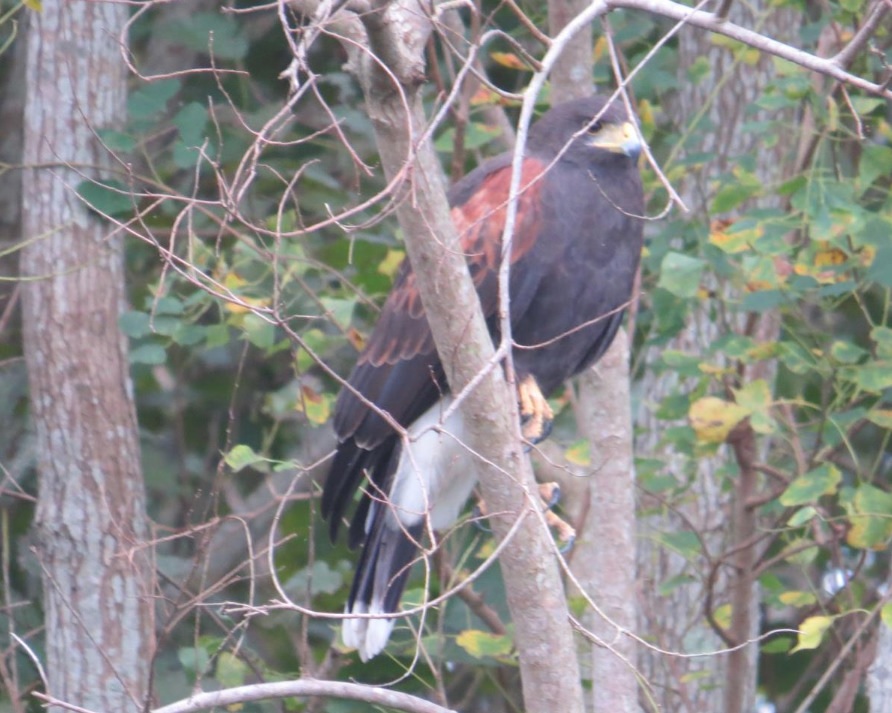
Photo by Glenn Ousset
One adult (2019-002) on 7 January 2019, Calcasieu: Ellis Moss Rd., south of Sulphur;
Vicki Sensat (ph).
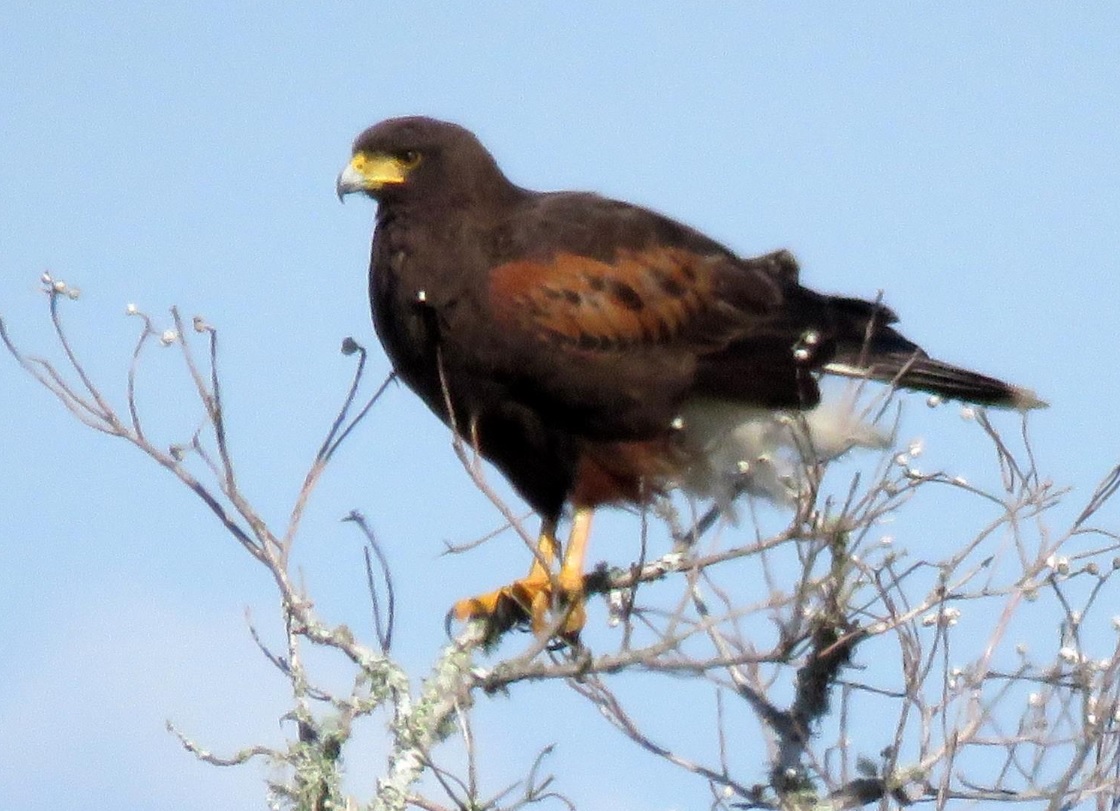
Photo by Vicki Sensat
One adult (1992-08; formerly 93-01) on 10-11 Dec. 1992, Calcasieu: Edgerly, intersection of Hwy. 90 and Hwy. 388 (AB47(2):267). This bird actually flew towards the observer and was relatively tame. The bird�s plumage was reported to be in good condition, but its right foot appeared injured or paralyzed. There were no accepted records of this species at the time of review. Rumors persist regarding intentional releases of Harris�s Hawks in the Lake Charles area during this period as an attempt by falconers to establish a breeding population. The status of Harris�s Hawk will remain problematical, because they are commonly used by falconers and are subject to accidental release. Each record will be considered on its own merits until a pattern of vagrancy is demonstrated outside the one irruption year (see Harris's Hawk account in Accepted Records section).
One (1994-130) on 23 Jan 1994, Calcasieu: Hwy. 27, 2.5 mi. S of intersection with Hwy. 14 at Holmwood. This record received a 2-5 final vote, with four members voting not to accept based on origin, and one based on questionable identification - this vote resulted non-acceptance based on questionable origin. Also of concern was that no hard evidence was obtained for this potential first state record. Unlike winter 1994-95, when this species was reported throughout the SW and south-central US (including two accepted Louisiana records, NASFN49(2):156, Dittmann et al. 1998, and see LBRC record no. 1995-14 above), during winter 1993-1994 there was only a slight irruption restricted to along the Upper Texas Coast (NASFN48(2):225).
One adult (2017-26) on 28 October 2017, Cameron: Hwy. 27 just S of the Holly Beach water tower. This report was initially circulated with accepted photo-documented LBRC 2017-049 (21st Report of the LBRC) because it was found nearby and slightly later on the same day. However, some Members believed that it should be reviewed separately and it was subsequently separated and numbered, then re-circulated. Only one of the two observers submitted a report. The observation was very brief, and both of the observers likely assumed that better documentation was not needed because their sighting presumably involved the same hawk photographed earlier in the day. Unfortunately, the description for this record was �dark brown large hawk.� No other supporting identification characters were observed by the submitting observer. All Members agreed that such a description was inadequate to support the identification or to confirm that this report involved the same individual as LBRC 2017-049 (21st Report of the LBRC).
One adult (2018-065) on 30 October 2018, Calcasieu: off Fabacher Rd. between Gum Island Rd. and Drew Canal. This would have represented the 10th state occurrence. The report consisted of a rudimentary description outlining characters that supported identification of this species. One Member was concerned the report did not mention whether the bird lacked jesses because Harris’s Hawk is a popular falconry species. With such skeletal details, other Members noted that no other records of Harris’s Hawk were found that year in the vicinity to provide a supporting pattern. Although a bird was found somewhat nearby the following year, and a couple other Harris’s Hawk records occurred on the coast of Cameron and in SE Texas, Members were not inclined to use those as creating a pattern of support. The results of the Discussion Round vote: one Member voted to accept; five to accept Origin-Hypothetical, and three not to accept.